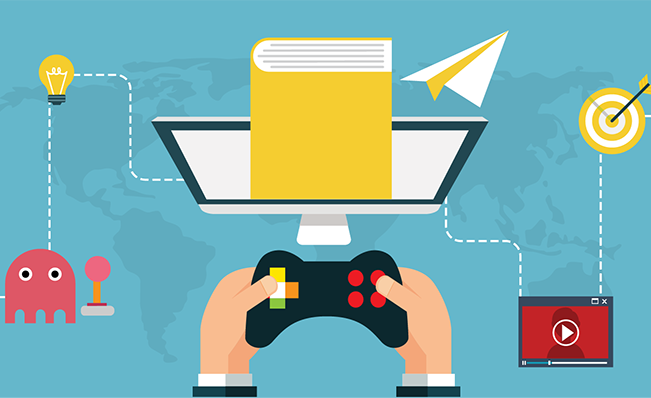The Game-based learning market has been gaining significant traction over the past few years, with the increasing adoption of e-learning and advancements in technology. This market combines the engaging and immersive elements of gaming with educational content to create an effective learning experience for students of all ages.

The market for game-based learning is expected to continue to grow in the coming years. According to a report by Zion Market Research, the global game-based learning market size was worth around USD 10.9 Billion in 2022 and is predicted to grow to around USD 52.8 Billion by 2030 with a compound annual growth rate (CAGR) of roughly 19.51% between 2023 and 2030.. The report cites factors such as the growing adoption of digital learning, the increasing use of mobile devices, and the need for personalized learning experiences as driving factors for this growth.
Game-based learning is not just limited to the education sector but also being used in corporate training, healthcare, and military training. It has proven to be a successful method of learning as it increases retention rates, enhances critical thinking skills, and provides real-time feedback to the learners.
However, with the rapid growth of the game-based learning market, there are also challenges that need to be addressed. This article explores the opportunities and challenges in the game-based learning market.
Opportunities in the Game-based learning market:
- Increased engagement: Game-based learning provides an immersive learning experience that keeps learners engaged and motivated. The use of gamification elements such as points, badges, and leaderboards encourages learners to participate actively and track their progress.
- Personalized learning: Game-based learning enables personalized learning, allowing learners to learn at their own pace and style. This approach ensures that learners get the required attention and support to achieve their learning objectives.
- Cost-effective: Game-based learning is a cost-effective solution compared to traditional classroom-based learning. It eliminates the need for physical classrooms, training materials, and travel expenses.
- Global reach: Game-based learning provides an opportunity for learners to access educational content from anywhere globally. It breaks down geographical barriers and provides learners with the flexibility to learn at their own pace.
Challenges in the Game-based learning market:
- Integration with the curriculum: One of the significant challenges faced by game-based learning is the integration with the curriculum. Educators need to ensure that the game-based learning content aligns with the curriculum and meets the learning objectives.
- Quality of content: Game-based learning requires high-quality content that is both engaging and educational. Developers need to create content that caters to different learning styles and abilities.
- Technology infrastructure: Game-based learning requires a robust technology infrastructure to ensure smooth and uninterrupted learning experience. This includes high-speed internet, compatible devices, and adequate bandwidth.
- Evaluation and assessment: Evaluation and assessment are critical in game-based learning to measure the learning outcomes and effectiveness of the program. Developers need to create assessment methods that align with the learning objectives and provide real-time feedback to learners.
One of the key advantages of game-based learning is that it allows for personalized learning experiences. Games can be customized to meet the needs of individual learners, allowing them to progress at their own pace and focus on areas where they need more help. This can lead to better learning outcomes and higher levels of engagement.
Another advantage of game-based learning is that it can be used in a variety of settings. Games can be used in classrooms, online learning environments, and even in corporate training programs. This makes it a versatile tool for educators and trainers looking to create engaging and effective learning experiences.
The game-based learning market is also benefiting from advancements in technology. Virtual reality and augmented reality are increasingly being used to create immersive learning experiences that can transport learners to new environments and provide hands-on learning opportunities.
FAQs:
Q. What is game-based learning?
A. Game-based learning is a method of learning that uses gaming elements and immersive experiences to teach educational content.
Q. How is game-based learning different from traditional learning?
A. Game-based learning is different from traditional learning as it offers an engaging and immersive learning experience that keeps learners motivated and increases retention rates.
Q. Is game-based learning effective?
A. Yes, game-based learning has been proven to be an effective method of learning as it enhances critical thinking skills, increases retention rates, and provides real-time feedback to learners.
Q. What are the challenges in game-based learning?
A. The challenges in game-based learning include integration with the curriculum, quality of content, technology infrastructure, and evaluation and assessment.
Conclusion:
The game-based learning market is a rapidly growing industry that offers innovative and engaging ways of learning. It provides an opportunity for learners to access educational content from anywhere globally and learn at their own pace. However, there are challenges that need to be addressed, including integration with the curriculum, quality of content, technology infrastructure, and evaluation and assessment. The key to success in game-based learning is